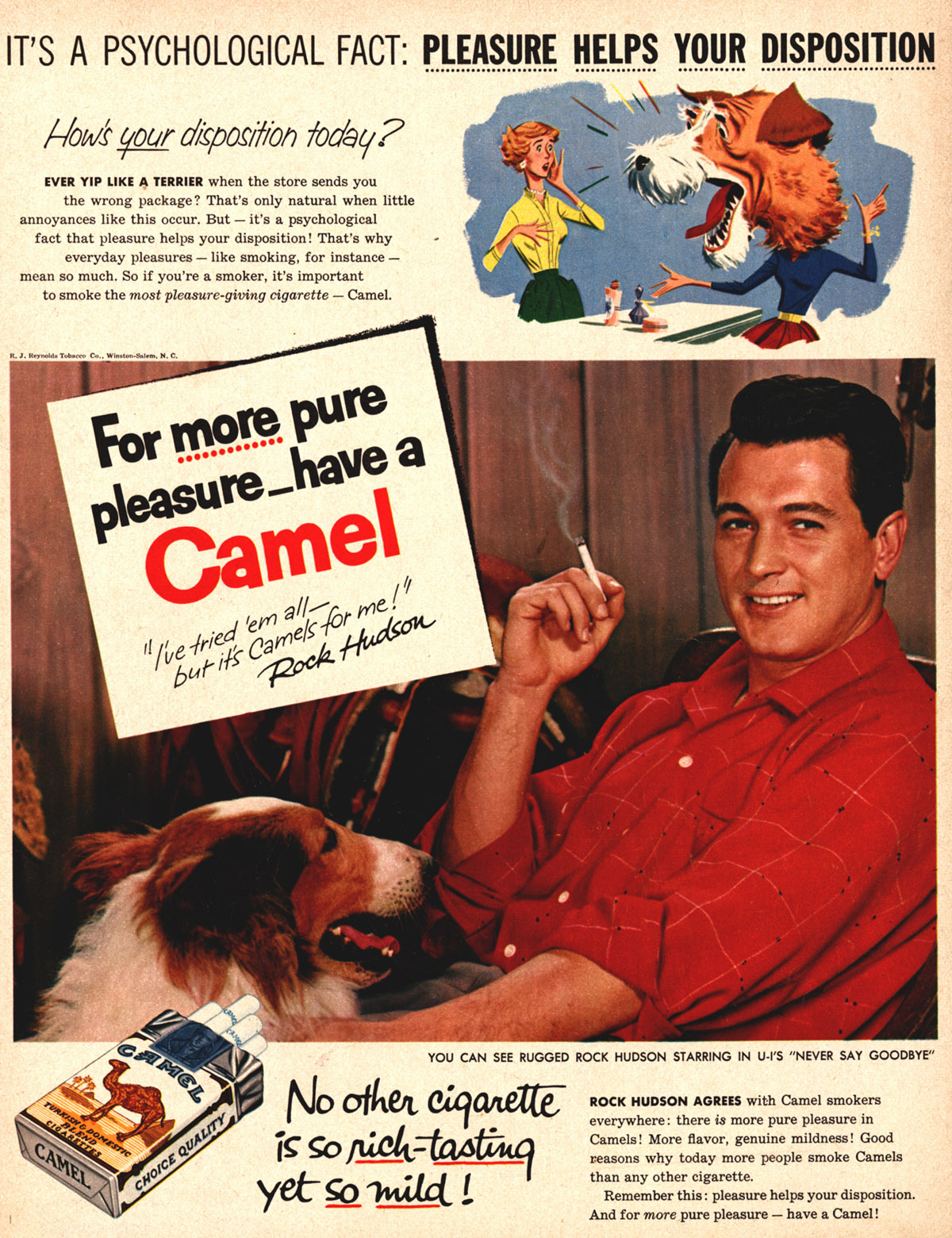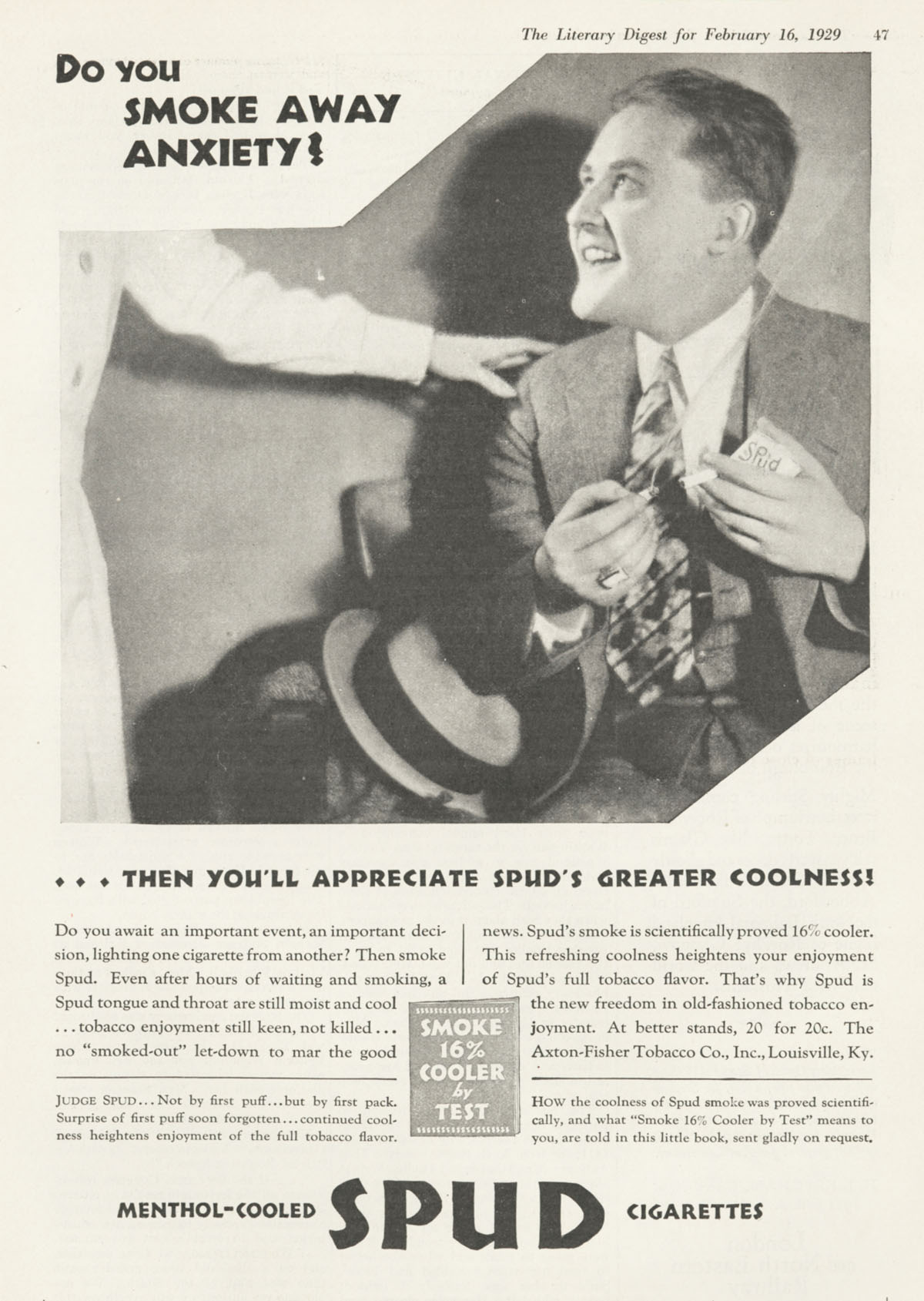Understanding the Intersections of Mental Health and the Tobacco Retail Environment
“Tobacco is not an equal opportunity killer” and the tobacco industry also has a history of targeting people with mental illness. The Substance Abuse and Mental Health Services Administration (SAMHSA) defines mental illness as any diagnosable mental, behavioral, or emotional disorder. Currently, one in five adults in the U.S has some form of mental illness. Data from the 2019-2020 National Survey on Drug Use and Health show that the median smoking rate among adults with any mental illness was 24.7% and the the smoking rate among people with serious mental illness was 27.2%.[1] People diagnosed with serious mental illness have shorter life expectancies than people without mental illness, a disparity that is compounded by high rates of tobacco use among this population.[2] People who smoke and have a serious mental illness die about 15 years sooner than people who have never smoked and do not have a serious mental illness, with smoking accounting for about one-third of all deaths among those with serious mental illness.[3]
Individuals with mental illness are a difficult sub-population to target for place-based interventions. Individuals with a mental illness are, for the most part, not a clustered or “racialized” group – the concept in which tobacco products are disproportionately marketed in relation to race, class, and place. This poses a challenge to identifying living trends among individuals with mental illness. In addition, people with severe mental illness may not have control over their living arrangements. Based on the National Survey on Drug Use and Health, individuals with mental illness live among the general population in non-institutionalized outpatient facilities or group homes within residential communities. However, living in an area with higher tobacco retailer density is significantly associated with higher nicotine dependence among individuals with mental illness.[4]
Individuals with mental illness experience more difficulty quitting tobacco, higher nicotine dependence, and smoke more heavily than people without mental illness.[5] Additionally, studies have shown that individuals with mental illness consume 44% of the cigarettes smoked in the United States.[6] Tobacco use may also further exacerbate mental illness by increasing the rate at which the body metabolizes medications used for particular diagnoses.[7]
Evidence suggests there are systemic, biochemical, environmental, and cultural determinants contributing to the high smoking prevalence among those living with mental illnesses. The purpose of this report is to highlight variables that are predictive or associated with high rates of tobacco use among people with mental illness, including how the retail environment functions as one such variable.
Targeted Marketing & Retailer Density
Tobacco marketing is an environmental determinant contributing to higher smoking prevalence among individuals with mental illness. Internal tobacco industry documents show that companies like R.J. Reynolds created market segments for groups who smoke for “mood enhancement” for “stress relief” “anxiety relief” or to “gain self-control”, targeting these individuals with advertisements that address moods and depressive symptoms. [8]
Further, risk factors for smoking such as poverty, lower education, and unemployment are also risk factors associated with mental illness.[9] With approximately 375,000 retail outlets that sell tobacco in the US, and tobacco companies spending over $7.1 billion each year in the retail environment, the widespread presence of tobacco outlets, products, and advertising encourages initiation and discourages cessation of tobacco use. Tobacco product retail advertising is often concentrated in low-income and minority neighborhoods.[10] The overlap in risk factors potentially compounds the impacts of tobacco marketing on low-income people of color with mental illness. Learn more about racial, economic, education, and gender-based disparities here.
High tobacco retailer density increases access to tobacco products and exposure to tobacco advertisements and promotions. In San Francisco, a study found that tobacco retailer density was twice as high near where smokers with Serious Mental Illness (SMI) lived than near where other members of the general population lived. [4] For individuals with SMI, living near a greater number of tobacco retailers was also associated with having greater nicotine dependence and lower readiness to quit, even when controlling for socio-demographics and severity of mental illness.[4] Serious mental illness is defined by the Center for Mental Health Services as mental illnesses that result in “functional impairment which substantially interferes with or limits one or more major life activities.” Such findings reinforce that the built environment significantly contributes to increased smoking prevalence among the general population, including individuals with mental illness.
Some of the other, more systemic, determinants contributing to higher smoking prevalence among people with mental illnesses are a lack of awareness of evidence-based tobacco cessation treatments for individuals with a mental illness among health practitioners, lack of targeted interventions, and lack of access to cessation resources. Currently, only 1 in 4 behavioral health treatment facilities offer nicotine replacement therapy and only one in five offered other cessation medications.[11] Some researchers suggest continued education for behavioral health practitioners, increasing surveillance of appropriate nicotine dependence symptoms, and engaging clients with mental illnesses in conversations about cessation resources as appropriate ways to help reduce tobacco use among individuals with mental illnesses.[12]
Organizational cultures and practices within mental health treatment settings may also contribute to high tobacco use prevalence among people with mental illness. [13] Examples of problematic organizational cultures that may perpetuate tobacco use among people with mental illness are:
- “Self-Medication” model beliefs, which posit that individuals with mental illness need to smoke to manage their psychiatric symptoms, have been the subject of tobacco industry-sponsored research. [14] While nicotine is a central nervous stimulant that can have a transient positive effect on mood, cognitive ability, and behavior, quitting smoking can actually improve mental health. [13, 15, 16]
- Lack of encouragement to quit by health professionals because they mistakenly believe people with mental illness are not interested in quitting. In fact, studies have shown that the majority of smokers with mental illnesses (up to 80%) want to quit. [17, 18, 19]
- Concern about the impact of smoking cessation on patients’ mental health.9 In fact, quitting smoking does not exacerbate other psychiatric symptoms and can support other substance use treatment. [19, 20]
- A perception that people with mental illness are unable to quit smoking. [13] In fact, people with mental illnesses can be and are successful with quit attempts, especially with cessation assistance. [19, 21, 22]
- Smoking within mental health facilities has been indirectly encouraged. The tobacco industry has historically provided free or cheap cigarettes to psychiatric facilities and have attempted to block policy efforts to make psychiatric hospitals smoke-free. Access to cigarettes has also been used as a reward in some facilities.
Combatting these misconceptions and improving organizational practices in healthcare settings may help reduce the disparate rate of smoking we see among individuals with mental illnesses. Learn more:
- CDC Office on Smoking and Health’s factsheet: What We Know: Tobacco Use and Quitting Among Individuals with Behavioral Health Conditions.
- Kansas Tobacco Guideline for Behavioral Healthcare: An Implementation Toolkit
Point-of-Sale Policy Solutions
The CDC Best Practices for Comprehensive Tobacco Control Programs suggest that tobacco control programs should focus on identifying and eliminating tobacco-related disparities among population groups, preventing initiation among youth and young adults, promoting quitting among adults and youth, and eliminating exposure to second-hand smoke. Individuals with mental illness need to be identified as a tobacco disparity group [22] and additional education is needed to assist health practitioners’ development of targeted interventions for people with mental illness. Point-of-sale strategies are an effective way to complement targeted health interventions.While research regarding the effects of the tobacco retail environments on individuals with a mental illness is limited, findings to date are significant enough to develop point-of-sale policies that will help alleviate the burden of tobacco industry tactics targeted at individuals with mental illness.
Although evidence is limited, individuals with serious mental illness may be a price sensitive group, due to their low SES and heavy reliance on Medicaid. Smoking prevalence among Medicaid recipients is 53% greater than the general population. [24] Point-of-sale strategies offer pro-equity solutions to reducing access to tobacco products in the retail environment where price sensitive populations are heavily targeted. For example:
- Reducing the number, location, density, and types of tobacco retail outlets
- Restricting retailers from locating near schools – Research has shown that reducing the number of tobacco retailers within a certain proximity of schools can greatly reduce disparities in retailer density based on race and income. By reducing retailer density in low-income communities, restricting tobacco sales within a 1000ft radius of school property could also benefit individuals with mental illness.16
- Restricting the number of retailers that can be located in a geographic area- Setting a cap on the number of retailer licenses based on population or geographic area. This has been put in place in San Francisco and in Philadelphia to reduce disparities in tobacco retailer density by neighborhood. Check out our Stories from the Field to learn more about San Francisco, CA and Philadelphia’s policies.
- Restricting retailers from locating within 1000ft of each other to limit density.
- Increasing cost of tobacco products through non-tax approaches.
- Minimum price policies
- Prohibiting price discounting (i.e. prohibiting cents-off, dollars-off discounts, coupons, two-for-one deals for all tobacco products)
Utilizing point-of-sale strategies to reduce the tobacco retailer density by including policy plug-ins to comprehensive tobacco licensing laws or developing stand-alone ordinances could significantly impact this vulnerable sub-population.





